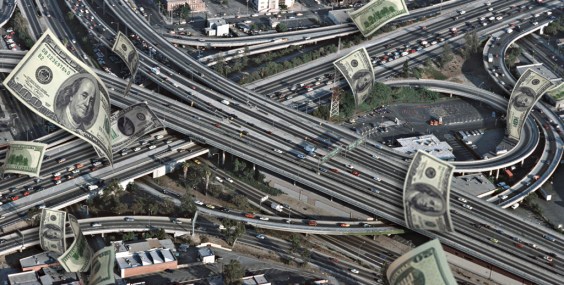The brilliant thing about car-sharing is that it leads people to drive less by providing access to cars. It allows people to give up their personal vehicles (along with the gas, maintenance, parking, and insurance costs they entail) without giving up the ability to use the car once in a while when necessary. It diminishes the need for parking spaces, since one vehicle can serve several households. And it makes people think harder about the trips they take, since each trip constitutes a higher cost than in a personal vehicle, which come with high upfront costs but low per-trip costs, encouraging more driving just to get your money's worth out of your investment.
But only 0.27 percent of U.S. drivers participate in car-sharing programs.
A recent study from the RAND Corporation estimates that that number could rise to 4.5 percent if policies were put in place to support car-sharing. RAND's outer estimate of the potential of car-sharing goes as high as 12.5 percent of the 21-and-older population of major cities. The potential for greenhouse gas emissions savings is significant.
The RAND authors cite a 2008 survey showing that for every shared vehicle in use, nine to 13 private vehicles are taken off the road, and that half of car-sharing participants either sold a car or didn't buy a new car because of their membership. Another survey found that average vehicle ownership per household fell from an already-low 0.47 to 0.24 cars after adopting car-sharing. Average vehicle ownership per household is 1.87 in the United States.
RAND attributes the greenhouse gas reductions from car-sharing to a) fewer vehicle miles traveled, b) fewer cars being manufactured, and c) more efficient vehicles being used more of the time. After all, car-sharing can avoid SUV syndrome, where people buy a big, heavy car for the one time a year that they actually go into the mountains with it, and then spend the rest of the year driving alone on highways and trying to park it in small spaces. Also, intensively-used shared cars will be replaced more often than private vehicles, meaning that more of them will have the most modern fuel-efficiency ratings. The report doesn't mention the GHG savings if car-sharing results in the building of fewer roads or parking spaces.
The estimates of car-sharing's potential market penetration are among the most helpful elements of the RAND report.
In the most optimistic scenario -- 20.3 million car-share users, or about 36 times the current rate -- car-sharing would reduce overall car emissions by 1.7 percent. A more realistic scenario of 7.5 million users, which would still require the widespread adoption of policies to support car-sharing, leads to a 0.6 percent emissions reduction. The authors provide a "cautionary note that estimates of growth in vehicle sharing have previously been proven wrong." They cite a 1994 study that predicted that the market potential in Germany was 2.45 million members; "however, ten years later, the market stood at 70,000."
On a per-person basis, car-sharing doesn't cut emissions as much as transit. One person taking transit to work instead of driving can save more than two metric tons of carbon dioxide emissions a year, according to APTA, as opposed to the above estimate of 0.89 tons per person car-sharing. But car-sharing also works in tandem with transit, functioning best where people can rely on transit for many trips. Car-sharing remains a largely urban phenomenon, according to the RAND report, with the only non-urban success stories on college campuses or eco-communes.
The other major contribution of the report is that it suggests some ways to make car-sharing more attractive. They say it will never take off unless car-sharing is 1) cheaper and/or more convenient than owning a personal automobile, 2) profitable for providers, and 3) reaches critical mass in a geographic area. To make that happen, they recommend reducing impediments in insurance policies and tax codes and increasing provisions for "one-way, dynamic vehicle sharing," and better ride-matching services. The recommendations also include the promotion of short-distance, low-speed "neighborhood vehicles," like the golf carts senior citizens drive around retirement communities, and the promotion of driverless vehicles. The report doesn't explain in detail how driverless cars would enhance vehicle-sharing.






